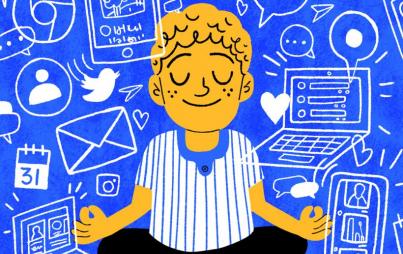
Credit: Thinkstock
To sleep over or not to sleep over—that is the question. Most of us have contemplated this conundrum following a one-night stand. Luckily, science has the answer—and surprisingly, it suggests snuggling up for the long haul . . . awkward morning greeting be damned.
According to Dr. Wendy Troxel, an assistant professor of psychiatry and psychology at the University of Pittsburgh, “the psychological benefits we get having closeness at night trump the objective costs of sleeping with a partner.”
Dr. Troxel’s study also examined those in stable relationships, and found that women who share a bed with a partner fall asleep faster and wake up less frequently during the night than their single counterparts. So what gives? Shared sleep in healthy relationships (the operative words here being "healthy relationships"—raise your hand if you’ve ever tossed and turned during an unhealthy relationship), can potentially reduce levels of the stress hormone cortisol, as well as lower blood pressure and heart rates.
In addition, sharing the bed can reduce inflammation and boost oxytocin, aka The Love Hormone. Oxytocin eases anxiety and is produced by the same part of the brain in charge of the sleep/wake cycle. According to Dr. Brenda Davies, oxytocin has abundant benefits:
“It even plays a part in raising our self-esteem and, therefore, improves our capacity to have healthy, close relationships. It’s also a powerful natural anti-inflammatory, and has anti-ageing properties—one reason why people living isolated lives, with little human touch, can age prematurely.”
But perhaps most importantly, sleeping in the same bed means more cuddling, which improves both our physical and mental well-being. By making you relax, snuggling can even help prevent illness. According to Roberta Lee, MD, vice chair of the Department of Integrative Medicine at Beth Israel Medical Center in New York City, "Anything that increases the relaxation response triggers the restoration of your immune response."
Yes, But What If I'm Single?
Fret not, slightly-annoyed-now single ladies; we can all get more oxytocin, coupled or not. All you need is touch. Neurologist Shekar Raman, MD, explains:
“A hug, pat on the back, and even a friendly handshake are processed by the reward center in the central nervous system, which is why they can have a powerful impact on the human psyche, making us feel happiness and joy . . . And it doesn't matter if you're the toucher or touchee. The more you connect with others—on even the smallest physical level—the happier you'll be.”
So basically, hug like no one’s judging. One study showed that a 20-second hug, followed by 10 minutes of hand-holding, is ideal. But anything is helpful . . . so just give your friends an extra-long squeeze.
Another way to get the boost is by enjoying a massage—even a quick 10 minutes at the mall or where you get a mani/pedi gets the job done. And who doesn’t love a good excuse to book a massage?
It also turns out that cuddling with Fluffy or Fido helps release oxytocin. And let’s face it; we all know there are times when we’d rather snuggle up to our pets than our partners. If you’re worried about germs, don’t worry—“Just wipe them down and you’ll be fine,” Lucy O’Byrne, a veterinarian at the West Village Veterinary Hospital in Manhattan, told The New York Times. “As long as you have good flea and tick control, and keep your pet healthy the way most people do, you don’t have to worry.”
So what’s the takeaway from all of this? As long as it’s in a healthy way—it’s good for us all to touch and be touched. Mariah, take it away . . .






